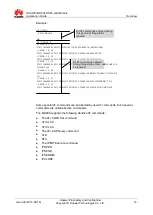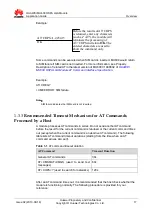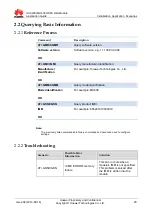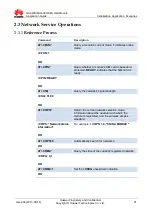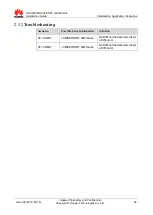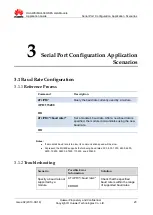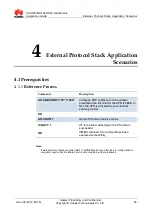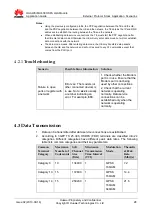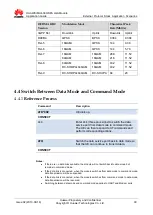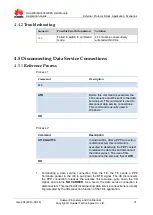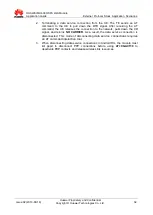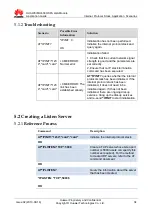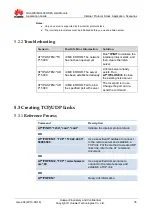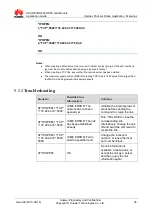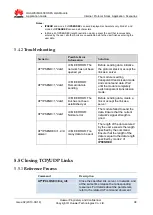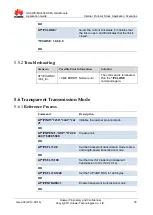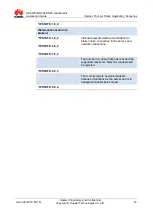
HUAWEI MU609 HSPA LGA Module
Application Guide
External Protocol Stack Application Scenarios
Issue 02 (2013-09-18)
Huawei Proprietary and Confidential
Copyright © Huawei Technologies Co., Ltd.
28
Notes:
Using the previously configured profile, the PPP negotiation between the TE and the UE,
and the PDP negotiation between the UE and the network, the TE obtains the IP and DNS
addresses to establish the routing between the TE and the network.
When establishing data service connections, the TE must start the PPP negotiation after
the UE enters data mode. Otherwise the UE will only enter data mode but will not establish
data connections with the network.
The data mode means: After entering data mode, the UE only transfers data packets
between the UE and the network, and will not respond to any AT commands except that
comes from the PCUI port.
4.2.1
Troubleshooting
Scenario
Possible Error Information Solution
Failure to open
ports or register with
a network
Error xxx: The modem (or
other connected device) is
in use. Note:
xxx
is usually
a number indicating an
error. For example,
633
.
1. Check whether the Modem
port is in use. Ensure that the
Modem port is not being
used by other connections.
2. Check that the current
network is operating
normally. Data service
connections can be
established only when the
network is operating
normally.
4.3 Data Transmission
1. Data can be transmitted after data service connections are established.
2. According to 3GPP TS 25.306, HSDPA (FDD) terminals are classified into 24
categories. Different categories have different peak data rates. The following
table lists common categories and their key parameters.
Common
Terminal
Category
Maximum
Number of
Codewords
Soft
Channel
Size
(Bits)
Minimum
Transmission
Time Interval
(TTI)
Modulation
Mode
Theoretic
al Peak
Rate
(Mbit/s)
Category 8
10
134400
1
QPSK
16QAM
7.2
Category 10 15
172800
1
QPSK
16QAM
14.4
Category 14 15
259200
1
QPSK
16QAM
64QAM
21.6



